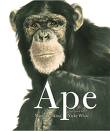Goodnight Gorilla

by Peggy Rathmann. ![]() Picture Book. 32 pages. Grades PreK-1.
Picture Book. 32 pages. Grades PreK-1.
Find this book: Amazon

Review

I really like Peggy Rathmann's Good Night, Gorilla (Putnam, 1994 ISBN 0-399-22445-9). I'm ashamed to admit that it almost slipped through my fingers. I passed it to my grandchildren without getting it, I think. They're the ones who called and told me I missed a good one. So of course I demanded its return and, of course, I liked it. I'm still giggling about it.
In Good Night, Gorilla, a zookeeper says good night to each caged animal he passes as he locks up the zoo for the night. He doesn't notice that the gorilla has stolen his keys and is releasing each animal right behind him. Silently, the animals form a parade to follow the zookeeper home. We watch him enter his house, climb the stairs and get into bed beside his wife, saying, "Good nigh dear" as he turns off the light.
The next page is black except for many speech balloons with a lot of "good nights." The following page is also black, except for one pair of wide-awake eyes. The wife turns on the light, puts on her slippers, takes the keys and leads all the animals back to their cages. She doesn't notice that one mouse (who's been dragging a banana all the way through the book) and the gorilla are still behind her as she gets back into bed.
When we finish laughing, we've got animals to count; endless details to notice; keys to keep track of; predictions to make; and problems to solve. But beware! There's so much that can be done with this book that we can overdo it and kill the enjoyment. Keep it light.
(Continued Below)
Advertisement:
(Continued Below)
Advertisement:

Related Books
 Ape by Martin Jenkins. Illustrated by Vicky White. (2007, Candlewick. ISBN 9780763634711. Order Info.) Nonfiction. 45 pages. Gr 1-12.
Ape by Martin Jenkins. Illustrated by Vicky White. (2007, Candlewick. ISBN 9780763634711. Order Info.) Nonfiction. 45 pages. Gr 1-12.
White's illustrations are a loving tribute to the four non-human species of great apes: chimpanzees, orangutans, bonobos and gorillas. On each spread a single individual is rendered in color with transparent washes over the drawing while the rest of the individuals and the background are left as rougher cross hatch drawings. The technique helps to create an arresting focus on each ape, especially their faces, which is furthered by White's attention to detail. Read More.
Advertisement:

